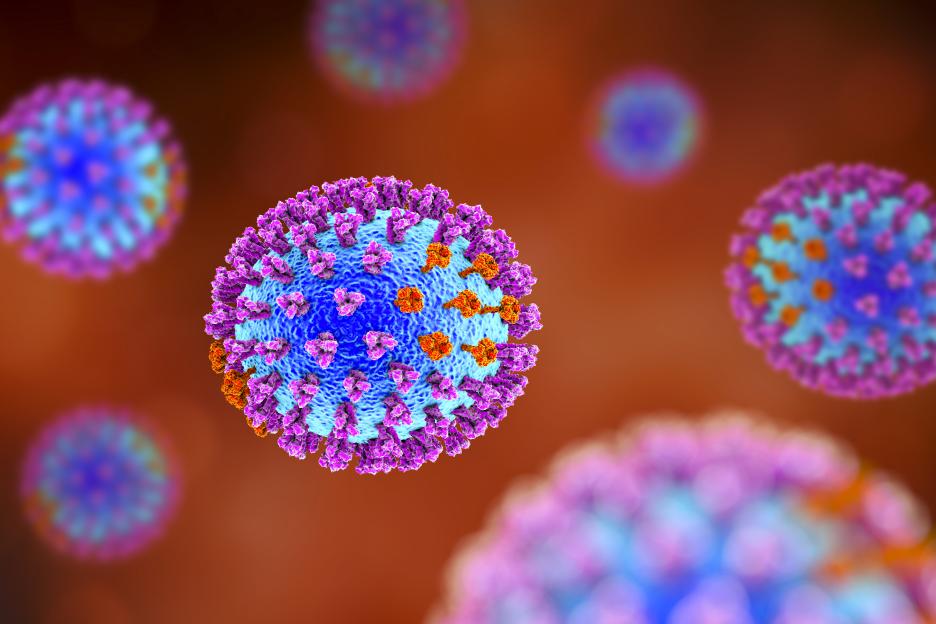STRUCK down by sniffles, headaches and fatigue?
As pollen counts reach peak levels in many parts of the country this week, it’s easy to blame for your symptoms.
 High pollen counts have been predicted for this week
High pollen counts have been predicted for this week, the South West, South East and East of will all be buffeted with ‘very high’ pollen levels until Friday this week, according to Met Office predictions â as will the East and .
But pollen particles might not be only culprit behind your symptoms.
It’s also very possible you’ve come down with a cold, or a painful , Professor Franklin Joseph, consultant physician and head of Dr Frank’s clinic , noted.
He told Sun Health: “This time of year it can be surprisingly tricky to tell the difference between hay fever, a spring cold and â especially with pollen levels soaring.
“Hay fever is an allergic reaction to pollen, so the key signs are sneezing, a runny or , itchy eyes and throat irritation â but no fever.
“The symptoms often feel worse outdoors and improve when you’re inside with windows closed.
“A spring cold, on the other hand, is caused by a virus.
“You might have a , headache , mild fever, or fatigue. It usually comes on more suddenly than hay fever and clears within a few days.
“Sinusitis tends to develop after a and involves inflammation or infection of the sinuses.
“If you feel pressure or pain around your cheeks, eyes or forehead, have thick yellow or green nasal discharge, and your symptoms persist or worsen after seven to 10 days, that points more to sinusitis than a cold or allergy.”;
The expert shared key ways to tell each of them apart â from the kinds of symptoms you’re experiencing, to how long they last and what environments they appear in.
What are your symptoms?
Though on the face of it each of these conditions might cause similar symptoms, there are subtle differences between the three, Dr Frank said.
“If you’re a lot and your eyes are watering but there’s no fever or body aches â think hay fever,”; he advised.
“If you feel tired, have a low-grade fever and your throat is sore â it’s likely a cold.”;
Dr Leyla Hannbeck, a pharmacist and chief executive of the Independent Pharmacies Association , added: “Itchy watery eyes are rarely associated with a cold.”;
As for sinusitis, Dr Megha Pancholi â clinical lead GP at Boots Online Doctor â described key symptoms that set it apart from hay fever and colds.
She told Sun Health: “If you have facial pain or pressure â especially around the eyes or cheeks â a blocked nose with thick yellow or green mucus, or a reduced sense of smell, you’re more likely dealing with sinusitis.
“You may also have a headache, fever or bad breath.”;
How long are they lasting?
Another key way of telling the difference between hay fever, a cold and sinusitis is how long your symptoms last.
“The duration and pattern of symptoms also help,”; Dr Frank explained.
“Hay fever tends to last as long as you’re exposed to pollen, while colds usually run their course within a week.”;
Dr Pancholi added: “It tends to flare up in warm, dry and follows a seasonal pattern.”;
“Sinusitis can drag on or feel worse after initially improving from a cold,”; Dr Frank went on.
“If symptoms persist, worsen, or you feel very unwell, always speak to your GP â especially if there’s a high fever, swelling around the eyes or intense facial pain, which could indicate a more serious infection.”;
Colds, meanwhile, “usually get better within a week or ten days by resting and drinking plenty of fluids”;, Dr Hannbeck told Sun Health.
When are your symptoms striking?
Finally, pay attention to where you start to get sniffles, sneezing or pain.
“One of the biggest clues is how your symptoms respond to the environment,”; Dr Frank said.
“If you feel worse after being outside or opening a window, particularly first thing in the morning, that’s classic hay fever behaviour.
“And don’t forget, it’s entirely possible to have both hay fever and a cold at the same time, which can make the symptoms feel more intense.
“It’s no wonder so many people are confused this time of year.”;
How to manage your symptoms
Telling knowing the difference between hay fever, a spring cold and sinusitis is key to choosing the right treatment.
Dr Pancholi said: “Hayfever symptoms can often be managed with over-the-counter treatments like , or eye drops.
“Sinusitis typically clears up by itself within four weeks.
“However, if symptoms persist beyond this period or get worse, it’s important to get advice from a pharmacist or GP to rule out a more serious infection or discuss further treatment options.”;
You can get advice and treatment for sinusitis â including prescription medicines when appropriate â in pharmacies under the NHS , no appointment needed.
As for colds, plenty of rest, hydration and healthy meals will go a long way.
You can also drink a hot lemon and honey drink to soothe your sore throat, or use painkillers and nasal sprays to ease other symptoms.







